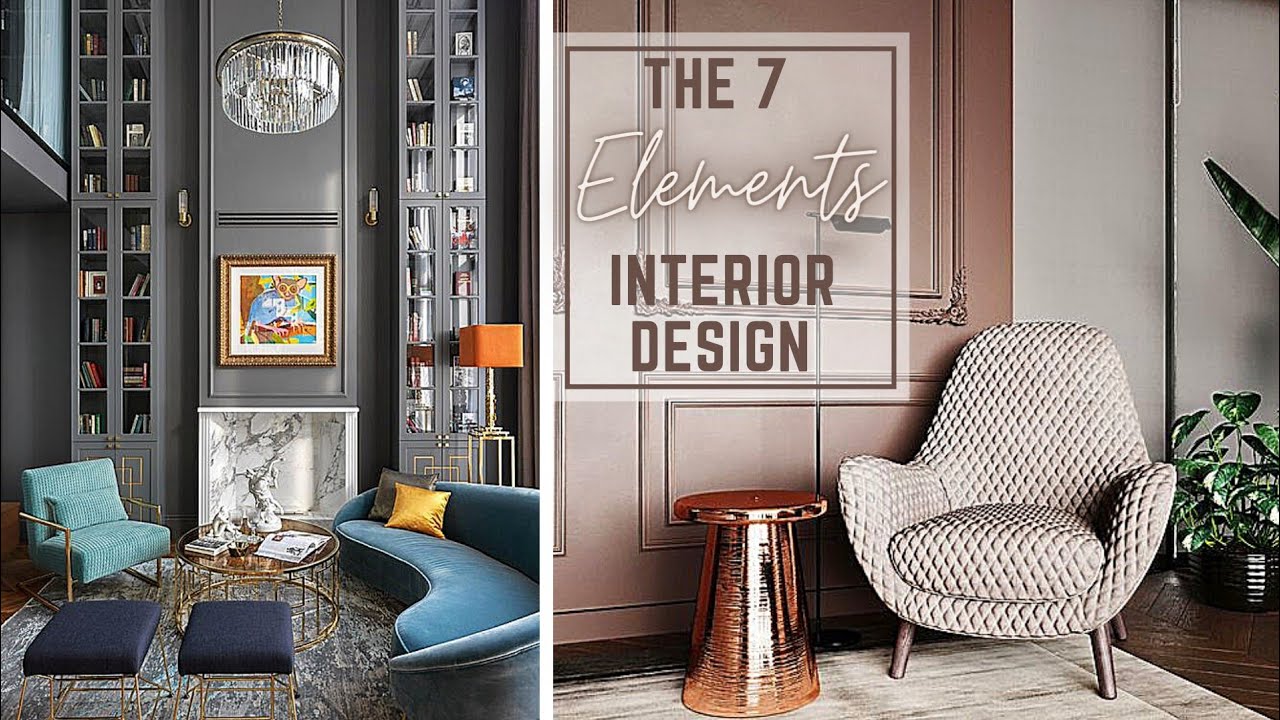7 Elements of Interior Design
Summary
TLDRIn this insightful video, interior designer Nasira explores the seven essential elements of interior design: space, lines, form, light, color, texture, and pattern. She emphasizes the importance of balancing positive and negative space, the impact of different types of lines on perception, and how form influences harmony. Nasira discusses the roles of natural and artificial lighting in enhancing a room's functionality and mood, alongside the emotional effects of color choices. She also highlights the significance of texture and pattern in adding depth and interest to spaces, encouraging viewers to thoughtfully integrate these elements into their designs.
Takeaways
- 🏠 Takeaway 1: Space is a crucial element in interior design, encompassing width, height, and length, and balancing positive and negative space is essential for harmony.
- 📏 Takeaway 2: Designers work with the available space, whether altering layouts or utilizing existing dimensions, to create a functional and appealing environment.
- 🔗 Takeaway 3: Lines in design can be horizontal, vertical, or dynamic, each serving to create stability, height, or interest in a space.
- 🌈 Takeaway 4: The form of objects—geometric versus natural—affects the overall aesthetic; using consistent shapes fosters unity and harmony in design.
- 💡 Takeaway 5: Lighting plays a dual role, incorporating natural and artificial sources to enhance mood and functionality, with four key types: task, accent, decorative, and ambient.
- 🎨 Takeaway 6: Color choice is about more than paint; it includes textiles and finishes, with considerations for the room's purpose, size, and desired atmosphere.
- 🧵 Takeaway 7: Texture adds depth to a space, involving both actual (tactile) and visual (aesthetic) elements that enrich the overall design.
- 🌀 Takeaway 8: Patterns can enhance interest in a room but should be chosen carefully based on room size; mixing a maximum of three patterns is advisable.
- 🔍 Takeaway 9: The interior design style impacts all elements, including color and texture; aligning these choices with personal style creates a cohesive look.
- ✨ Takeaway 10: Understanding and applying the seven elements of interior design—space, line, form, light, color, texture, and pattern—are key to creating a harmonious and inviting home.
Q & A
What are the seven elements of interior design discussed in the video?
-The seven elements are space, lines, form, light, color, texture, and pattern.
How does space influence interior design?
-Space refers to the three-dimensional area defined by width, height, and length. Designers must balance positive space (filled with furniture and decor) and negative space (empty areas) to create a harmonious environment.
What types of lines are important in interior design?
-There are three types of lines: horizontal (like tables), vertical (like windows), and dynamic (curved lines). Each type affects the perception of space and should be balanced for aesthetic appeal.
What is the significance of form in interior design?
-Form refers to the shape of objects in a space. It can be geometric (man-made, with hard lines) or natural (organic shapes). Consistent use of form can enhance unity and harmony in a room.
How does lighting affect interior spaces?
-Lighting includes natural and artificial sources, influencing the ambiance and functionality of a space. Designers should consider task lighting, accent lighting, decorative lighting, and ambient lighting to enhance a room.
Why is color selection crucial in interior design?
-Color can evoke emotions and memories. Designers must consider the room's purpose, size, and how lighting affects color perception when selecting paint, textiles, and other color elements.
What role does texture play in a room's design?
-Texture refers to the tactile quality of surfaces. Mixing different textures adds depth and visual interest to a space, creating a more inviting and dynamic environment.
How can patterns enhance interior design?
-Patterns can add visual interest and style to a space. Designers should consider the size of patterns relative to the room size and limit mixing to a maximum of three patterns to avoid overwhelming the design.
What are some practical tips for achieving balance in interior design?
-To achieve balance, consider the harmony of space, lines, form, light, color, texture, and pattern. Maintain an equilibrium between positive and negative spaces, and ensure a cohesive look throughout the design.
What should designers consider when choosing colors for small rooms?
-For small rooms, lighter and brighter colors are recommended to create the illusion of more space. Designers should also consider how natural and artificial lighting will affect the chosen colors.
Outlines

Cette section est réservée aux utilisateurs payants. Améliorez votre compte pour accéder à cette section.
Améliorer maintenantMindmap

Cette section est réservée aux utilisateurs payants. Améliorez votre compte pour accéder à cette section.
Améliorer maintenantKeywords

Cette section est réservée aux utilisateurs payants. Améliorez votre compte pour accéder à cette section.
Améliorer maintenantHighlights

Cette section est réservée aux utilisateurs payants. Améliorez votre compte pour accéder à cette section.
Améliorer maintenantTranscripts

Cette section est réservée aux utilisateurs payants. Améliorez votre compte pour accéder à cette section.
Améliorer maintenantVoir Plus de Vidéos Connexes

THE 7 ELEMENTS OF INTERIOR DESIGN EXPLAINED | CREATE THE PERFECT SPACE

The 7 formal elements of photography

9 Design Elements You Need To Know In Under 360 Seconds

Unsur Unsur Seni Rupa Terlengkap [ Disertai Dengan Animasi Penjelasan ]

Komponen atau Unsur Nirmana | Desain Grafis Percetakan

WHAT IS AN INTERIOR ARCHITECT ? // Interior Design vs. Interior Decoration vs. Interior Architecture
5.0 / 5 (0 votes)
